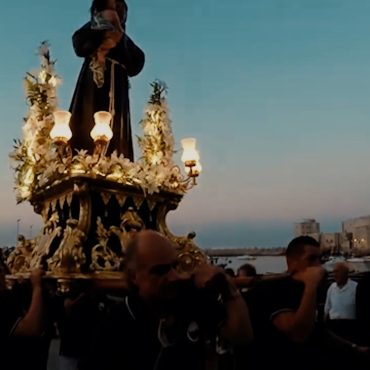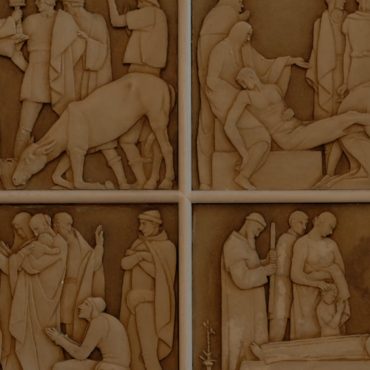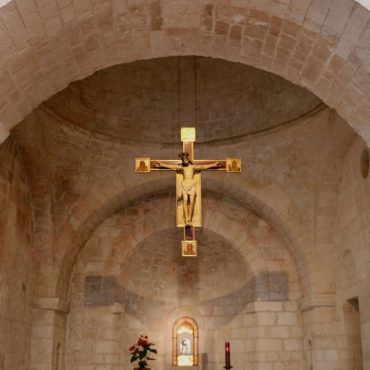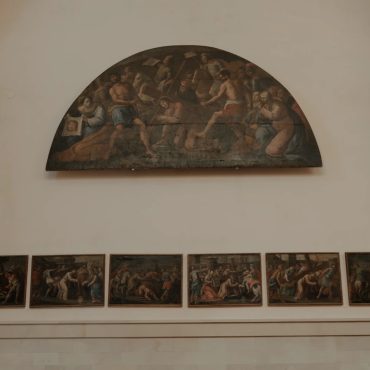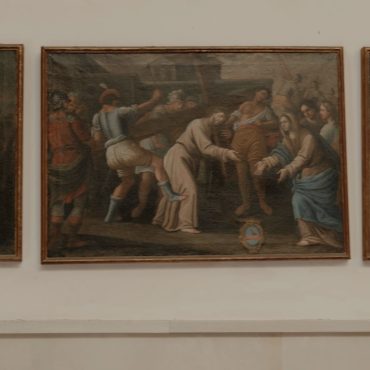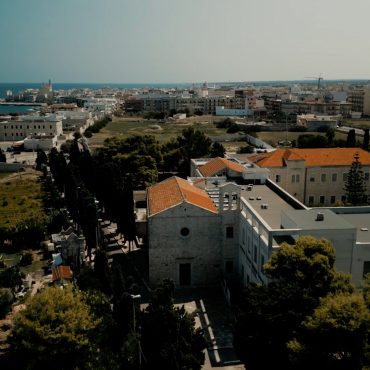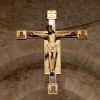
Church of the Crucifix
(Sec. XIV-XVI)
According to legend, many centuries ago a terrible storm hit the coasts of Giovinazzo and high waves and strong winds swallowed everything in their path. In the morning when the storm had passed, the people of the small coastal town made an extraordinary discovery: on the beach, among the remains of a shipwreck lay a large Byzantine wooden crucifix dating back to the 13th century. Its origins are still a mystery. From that moment, the beach became known as the “Cala del Crocifisso”.
In 1350, the Romanic chapel of “Santa Croce” was built in which to preserve the precious crucifix, venerated as miraculous. This church is covered in local stones called “chiancarelle”, and is typical of the style of that time, similar to that used for trulli. Over time the number of devotees called for an enlargement of the chapel, carried out in 1587 with the addition of a naved hall with two cross spans, transforming the ancient chapel into the presbytery of the new, larger church. Inside the church, the altars are decorated with bas reliefs by the sculptor Adolfo Rollo of Bari. They depict St. Anthony of Padua, St. Francis of Assisi and St. Clare of Assisi. The walls are adorned with paintings by Saverio De Musso of Giovinazzo, including the Stations of the Cross, the Crown of Thorns, Veronica and the Crucifixion, all dating back to the second half of the 18th century.
The church is managed by Capuchin friars who reside in the adjacent monastery, and it plays a central role in the community, especially on 13th June, the day dedicated to the festival of St. Anthony of Padua. On this day, the statue of the saint is placed on a boat in the Cala del Crocifisso and many devotees follow in boats towards the port where the statue is disembarked and the procession continues through the streets of the city, followed by devotees and a band. The church of the crucifix and its history represent an important sign of devotion through the centuries, keeping the memory and identity of the town of Giovinazzo alive.


